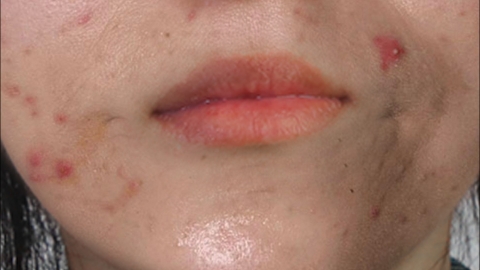How to Reduce Swelling from Cystic Acne
Cystic acne may generally be caused by genetic factors, hormonal changes, unhealthy lifestyle habits, eczema, folliculitis, and other factors. It is recommended to seek timely medical consultation to identify the cause and, under the guidance of a professional physician, reduce swelling through general treatment, drug therapy, or surgical treatment. A detailed analysis is as follows:

1. Genetic Factors
Genetic factors may affect an individual's sebaceous gland activity, follicular structure, and the immune system's response to Propionibacterium acnes, thereby increasing the likelihood of developing cystic acne. It is recommended to maintain good living habits, such as regularly cleansing the skin and avoiding squeezing acne, which can help alleviate symptoms.
2. Hormonal Changes
During puberty, the menstrual cycle, or pregnancy, hormonal fluctuations can stimulate the sebaceous glands to produce more oil, thereby promoting the formation of cystic acne. It is recommended to use progestins, such as medroxyprogesterone acetate tablets, progesterone injection, or dydrogesterone tablets, under medical guidance to reduce sebum secretion, thus alleviating symptoms of cystic acne.
3. Unhealthy Lifestyle Habits
Long-term late-night activities, unbalanced diets, and other unhealthy lifestyle habits can lead to a decline in the body's immunity, thereby aggravating the inflammatory response and degree of swelling associated with cystic acne. This is often accompanied by symptoms such as fatigue, inattention, and constipation. It is recommended to maintain a regular schedule, avoid staying up late, eat a balanced diet, and consume more foods rich in fiber and vitamins.
4. Eczema
If the skin remains in a moist, non-breathable environment for a prolonged period, eczema may develop. Inflammatory irritation can subsequently lead to cystic acne. Symptoms may also include itching and blisters. Treatment under a physician's guidance may include the use of hydrocortisone cream, Shedujing capsules, or calamine lotion.
5. Folliculitis
Poor personal hygiene may lead to skin infection by Staphylococcus aureus on the chin, potentially causing folliculitis. Under inflammatory stimulation, the keratin layer at the follicular opening may thicken, resulting in cystic acne. Symptoms may also include redness, swelling, and pain. It is recommended to use medications such as erythromycin ointment, mupirocin ointment, or fusidic acid cream under the guidance of a doctor.
When treating cystic acne, appropriate treatment methods should be selected based on individual circumstances. At the same time, maintaining good living habits and a positive mindset is important.




